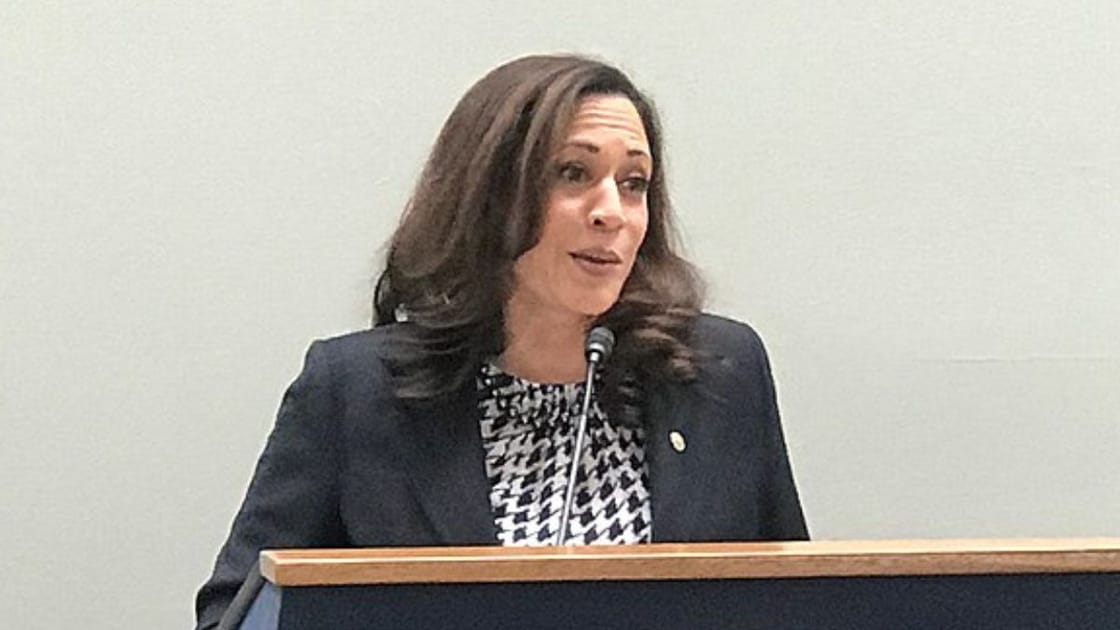
By Bethany Blankley (The Center Square)
With inflationary costs reaching a 40-year high under the Biden-Harris administration, President Joe Biden, Vice President Kamala Harris and others in their administration have repeatedly blamed businesses, livestock producers, grocery stores, oil and natural gas companies and others for high prices.
At the same time, a record number of businesses closed, declared bankruptcy and laid off hundreds of thousands of workers, citing high inflationary costs. In a recent report, nearly half of all small businesses said they won’t survive a second Harris term, higher costs and increased taxes, The Center Square reported.
RELATED: American Dream Out of Reach? Only 10% Polled Said They Can Afford to Buy a Home
Despite this, Harris says she plans to implement price controls, increase taxes on businesses and allow the 2017 tax cuts to expire, creating a $6 trillion chasm between her plan and former President Donald Trump’s, the Wall Street Journal reported.
As Americans struggled with increased grocery costs, including the high cost of meat, producers were faced with higher fuel, feed, grain and hay costs, driving up their operational costs that were passed onto consumers, according to multiple reports. In response, in 2021, the White House National Economic Council blamed high meat prices on “dominant corporations in uncompetitive markets taking advantage of their market power.”
The U.S. Chamber of Commerce disagrees, arguing that market concentration in the meat packing industry had been virtually unchanged for 25 years at the time. It then asked “if high prices are the result of corporate greed, why did these ‘greedy’ companies wait two decades to raise prices?” It clarified that increased meat prices were driven by supply and demand and overall inflation, largely created by increased federal spending and debt.
With costs increasing across the board, some companies adjusted by selling less product for more, referred to as shrinkflation, The Center Square first reported in 2022. However, Biden and Harris blamed companies for higher costs, reportedly in response to Democratic operatives advising them to do so, The Washington Post reported.
“What we said is, ‘You need a villain or an explanation for this. If you don’t provide one, voters will fill one in. The right is providing an explanation, which is that you’re spending too much,’” one Democratic operative told the Post. “That point finally became convincing to people in the White House.”
“And thus began the effort to wrongly blame employers for high prices,” the chamber’s executive vice president Neil Bradley said in a report identifying examples of the White House “wrongly blaming businesses for high prices.”
RELATED: California Legislature Allows ‘Undocumented’ Immigrants to Get Free $150K Home Down Payments
Also in 2022, Biden publicly blamed container companies for high shipping costs. News reports pointed to supply chain issues impacted by worker shortages, changes in customer spending that resulted in more cargo arriving in ports that the ports couldn’t handle, and port fines and fees contributing to higher costs.
The chamber notes that increased prices “resulted from consumers shifting their spending from services to goods” during the COVID-lockdown era, causing increased cargo demand. “Increased demand created backlogs at the ports, raising prices even higher. As supply and demand normalized, prices fell.”
By 2023, the president again publicly blamed the U.S. oil and natural gas industry for gas prices reaching a seven-year high. This was after he took more than 200 actions against the U.S. oil and natural gas industry, U.S. House Democrats introduced a bill that would have added a 50% per barrel tax, and the U.S. Treasury Department proposed a $110 billion tax hike on the industry, The Center Square reported.
But the industry doesn’t control the market, it’s subject to it like everyone else, Texas Independent Producers & Royalty Owners Association President Ed Longanecker said. The Biden-Harris administration could have lowered costs by expediting permits, lifting the federal leasing ban and creating “a more stable regulatory environment that provides certainty to producers and investors,” he told The Center Square. “Overburdensome regulations, increased taxes and anti-oil and natural gas rhetoric” exacerbated high energy prices and raised consumer costs, he said.
The administration has also repeatedly sued the industry and Texas, which leads U.S. production, exports and energy creation. In response, Texas Gov. Greg Abbott has aggressively fought to protect the Texas industry from Biden policies, the governor argues.
RELATED: Inspector General: ICE Incapable of Monitoring Unaccompanied Minors Released into U.S.
Also in 2023, the chair of Biden’s Council of Economic Advisers said grocery sector profit margins “were elevated” and needed to “pass-through” to consumers. Earlier this year, Biden again claimed, “there are still too many corporations in America ripping people off: price gouging, junk fees, greedflation, shrinkflation.”
The chamber refutes these claims, pointing to federal data, arguing that “higher grocery prices are a result of inflationary pressure across the supply chain and basic supply and demand dynamics,” explained by Department of Agriculture and Government Accountability Office economists.
Biden and Harris blaming businesses for high prices is “entirely backward,” Bradley says. “The truth is the Administration’s own fiscal and regulatory policies are driving inflation, and the American consumer is left holding the bag.”
Syndicated with permission from The Center Square.

